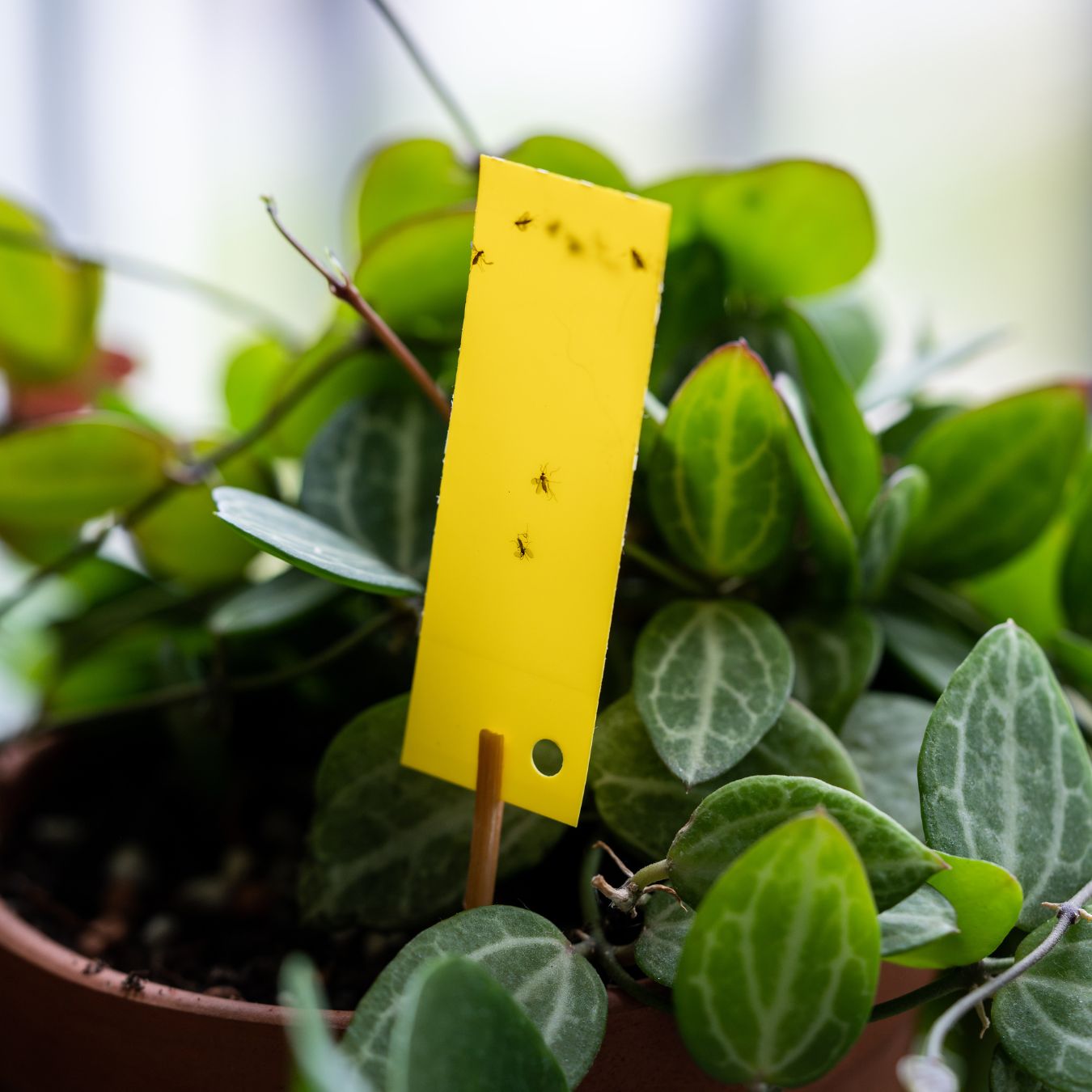Those are not fruit flies emerging from your plants—they are, in fact, tiny soil-borne insects known as fungus gnats. Their name is apt, as they, like fungi, thrive in moist, humid environments with decaying matter, such as rotting wood or leaves.

So, how do you eliminate fungus gnats?
Firstly, the presence of fungus gnats is an indicator that you are likely watering your plants too frequently without checking if the soil is dry before watering. The initial step is to reduce watering and allow your indoor plants to thoroughly dry out before watering again. This approach will not only decrease fungus gnat populations but also enhance the health of your plants. Wet roots can lead to root rot, while allowing plants to dry between waterings improves overall root health.
Second step: Clean up debris. Remove any fallen leaves or debris sitting on the surface of the soil of your indoor plants. Decaying debris serves as a breeding ground for fungus gnats, so it’s crucial to keep the area clean.
Third step: Use yellow sticky traps. These are sticky yellow strips of paper that attract mature fungus gnats, trapping them. This method effectively reduces fungus gnat populations, as the mature gnats are unable to breed. However, be warned: these traps are extremely sticky and can easily adhere to your fingers!

Finally, cinnamon is a key tool in your arsenal. Cinnamon acts as a natural fungicide and inhibits the growth of fungi, such as mushrooms. Fungus gnats detest cinnamon, and a simple dusting of cinnamon powder not only rids your plants of fungus gnats but also gives them a delightful Christmas scent.
Final Thoughts on Gnats
To summarize, reducing watering, cleaning up debris, using sticky traps, and applying cinnamon are the four steps to eliminating fungus gnats—remember, they are not fruit flies!

